Important tool updates - Learn more
- Learn
-
Articles
Read about influencer marketing
-
Growthnotes - Newsletter
Insights for the modern marketer
Marketing efforts often align with different stages of the customer journey, most commonly, the upper and lower funnel (also middle funnel, but that’s not our focus in this piece).
Some marketers focus heavily on one stage, while others aim for balance. The truth is, the right approach depends on your brand, audience, and goals.
What doesn’t change is this: upper and lower funnel strategies use different content, messaging, and performance metrics.
In this guide, we’ll break down those differences, with real examples to show how smart marketers tailor each stage effectively.
P.S. Knowing the difference is one thing; executing it is another. If you need expert help building full-funnel strategies that actually convert, check out our list of Top Global Marketing Agencies.
The marketing funnel represents the customer journey from awareness to purchase, with upper funnel (TOFU) and lower funnel (BOFU) stages requiring different strategies, content, and metrics.
Upper funnel builds brand awareness and sparks interest among broad audiences through tactics like paid media, educational content, influencer collaborations, and events. Success is measured by impressions, reach, and engagement.
Lower funnel focuses on converting high-intent leads into customers using personalized content, retargeting campaigns, email marketing, loyalty programs, and trust-building tactics. Key metrics include conversion rate, CAC, ROAS, and sales volume.
TOFU content includes blog posts, videos, infographics, and podcasts, while BOFU content includes case studies, comparison guides, demos, and testimonials.
Upper funnel drives long-term visibility and lead generation, while lower funnel delivers immediate ROI and revenue growth.
Optimization at each stage involves testing, tracking relevant KPIs, improving user experience, and segmenting audiences for tailored messaging.
A full-funnel approach that integrates TOFU and BOFU efforts maximizes ROI, improves acquisition efficiency, and strengthens customer relationships over time.
A marketing funnel maps the key stages of the customer journey, from first brand exposure to final purchase. It’s called a “funnel” because large numbers enter at the top, but only a small portion converts at the bottom. That’s where intent is highest, and decisions are made.
A marketing or sales funnel is also referred to as AIDA, which stands for awareness, interest, desire, and action. These represent the different stages of the funnel.
In a digital marketing strategy, it’s important to target all these different funnel stages. Why? Because 96% of website visitors aren’t ready to purchase on their first visit. But they may be willing to share contact info in exchange for valuable content like webinars, guides, or podcasts.
That’s where upper funnel marketing builds momentum. When content aligns with the customer’s stage, it moves them closer to action. And that’s where upper vs. lower funnel tactics come in.
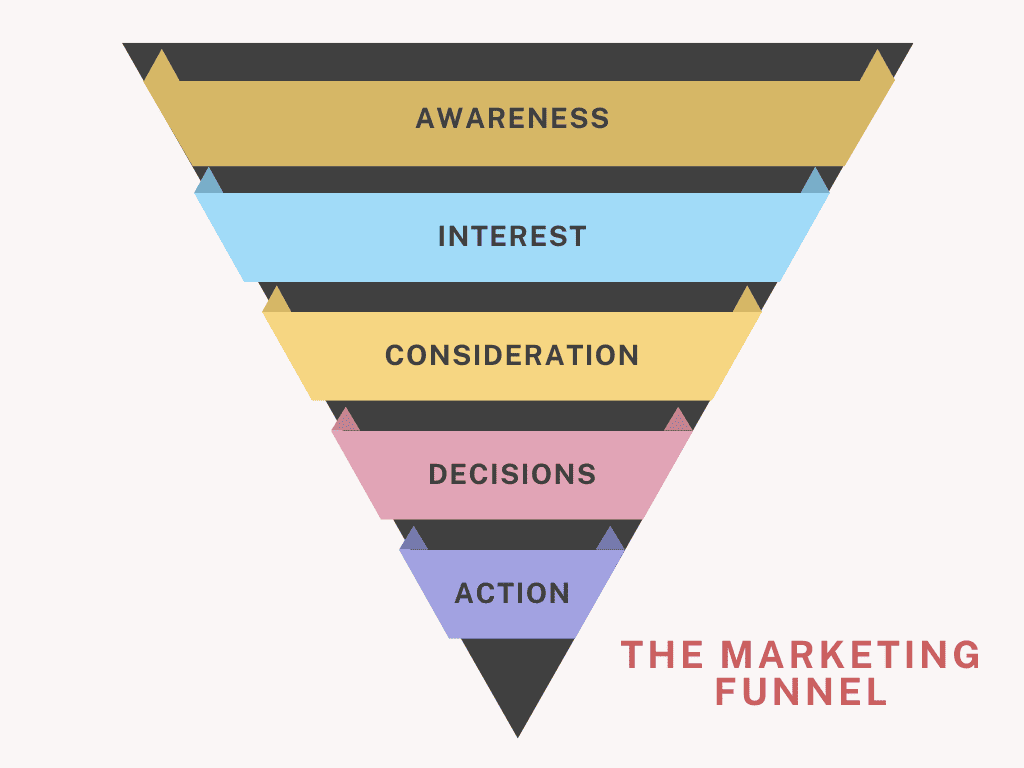
Upper funnel, also called top-of-funnel (TOFU) is the first stage of the marketing funnel. It focuses on building awareness and sparking initial interest. This is where you reach people who don’t yet know your brand. The goal here is to engage a broad audience and make your presence known instead of closing a sale.
Successful upper‑funnel campaigns usually blend paid media, social media ads, display ads, and content experiences like video content, articles, podcasts, or infographics. These efforts don’t push a sale. Instead, they build familiarity and trust to lay the groundwork for future action.
Upper funnel marketing is vital because it fuels the entire marketing funnel by building brand awareness, expanding your audience, and generating a steady stream of leads to guide through the customer journey.
Without investment in this stage, your conversion funnel will shrink, leaving fewer prospects to nurture, convert, or retain. In simple terms, it’s what brings potential customers to the door. Without it, no one discovers your brand in the first place.
That’s why marketers rely on top-funnel marketing strategies, such as blog posts, infographics, videos, and podcasts, to deliver value without a hard sell. This drives trust, visibility, and early engagement.
Upper funnel efforts deliver measurable long-term impact, too. According to Nielsen, brands using a full‑funnel marketing approach saw up to a 45% increase in ROI and a 7% lift in offline sales compared to single-stage campaigns.
Likewise, Criteo reports advertisers adding upper‑funnel channels often enjoy stronger engagement, higher conversion rates, and lower acquisition costs, with 35% new-customer rates tied to discovery campaigns.
Investing in awareness-building also improves overall marketing strategy alignment. McKinsey found that marketers who combine brand-building and performance efforts and reallocate budgets to higher-return areas can see a 15–20% lift in marketing ROI.
The lower funnel, also known as the bottom-of-funnel (BOFU) or decision stage, is where potential customers are ready to take action. They’ve moved past awareness and consideration. Now, they’re weighing options and preparing to buy.
At this point, your goal is clear: to convert. Marketing here should be direct, personalized, and focused on trust, clarity, and proof.
These leads are already warm and know your brand. They’ve likely visited your site, followed your socials, or engaged with earlier content. Your marketing efforts, at this stage, should be all about convincing them to buy (or whatever you need them to do).
Content like product demos, customer case studies, pricing pages, and side-by-side comparisons helps tip the decision in your favor. It’s about reducing friction and showing why your offer is the best choice, right when it matters most.
Lower funnel or BOFU marketing is important because it’s where sales, conversions, and customer acquisition happen. If upper funnel activities generate awareness, lower funnel tactics capture intent and turn prospects into actual customers.
At this stage, leads are high quality and more likely to convert. And statistics show that nurtured leads like those at the lower end of the funnel bring 47% higher order value.
If all or most of your marketing content or paid media is about awareness, you’ll have a very hard time convincing leads to convert. They’d know your brand and your products, but may hesitate to buy. It’s the conversion funnel marketing that prompts them to click the ‘buy’ button.
Lower funnel content is more direct, more persuasive, and sharply focused on decision-making. For example, Pipedrive saw a 33% increase in organic sign-ups by using low-funnel content like comparison pages, listicles, and customer reviews.
Below is an example of BOFU content in action, a sales planning software listicle from Pipedrive designed to capture high-intent leads.
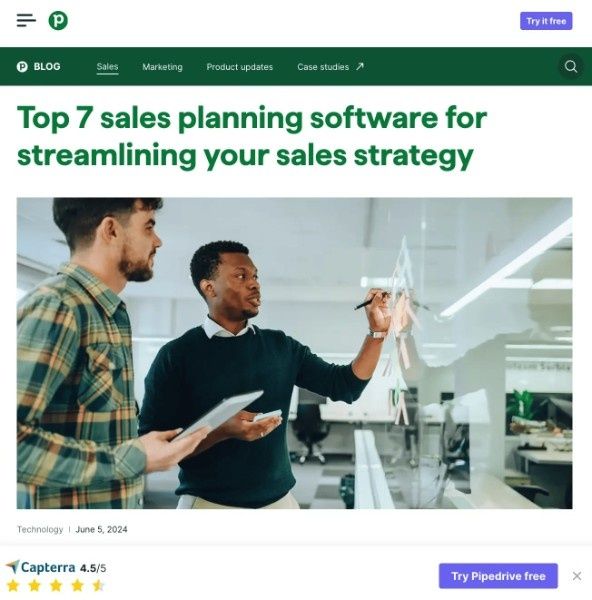
Good lower funnel marketing can also help keep cost per acquisition (CPA) low by converting existing interest rather than chasing new traffic.
In short, lower funnel marketing is essential because it turns visibility into revenue, maximizes ROI, and strengthens customer pipelines. Tactics like retargeting ads, personalized email flows, and high-intent content make this stage one of the most critical in your entire strategy.
The upper funnel is about building brand awareness, reaching new audiences, and sparking interest. In contrast, the lower funnel focuses on converting warm leads into paying customers. Each stage uses different content, goals, and metrics.
Let’s look at these differences before jumping into more details:

Upper‑funnel targets a broad, undefined audience, that is, people who may not yet know they need your product. Its goal is to build brand awareness and spark interest. In contrast, lower‑funnel focuses on a narrow, high-intent audience. These are people already familiar with your company and evaluating solutions.
The difference in audience and its intent also translates into the distinction in content they’re shown or the tactics used.
For example, upper funnel advertisers might run Google Ads with a ‘Target Impression Share’ bidding strategy to maximize visibility. Meanwhile, lower funnel campaigns may use ‘Maximize Conversions’ or ‘Maximize Conversion Value’ to prioritize performance and ROI.
Upper‑funnel efforts such as social media ads, display, or influencer outreach typically create longer‑term visibility. Results take time, but the impact builds and compounds gradually.
In contrast, lower-funnel tactics, such as retargeting campaigns, email drip campaigns, and cart abandonment remarketing, generate immediate action and measurable ROI.
If you conduct multi-touch attribution, you’d find BOFU marketing touchpoints nearer to the conversion point. These touchpoints might earn a bigger share in attribution (depending on the model) for the final action. But early TOFU touchpoints play a key role in shaping awareness and consideration, and without them, conversions may never happen.
At the top-of-funnel, you track impressions, reach, CTR, and engagement to measure visibility and brand recall. In the lower funnel, you measure conversion rate, customer acquisition cost (CAC), return on ad spend (ROAS), and sales volume to evaluate how effectively you’re closing deals.
To sum up, the key performance indicators (KPIs) for the upper funnel are more exposure-focused, while those at the bottom are more revenue-focused.
Upper funnel content marketing focuses on educational, storytelling-driven formats, like blog posts, video content, infographics, and podcasts, to capture attention and nurture potential customers.
On the other hand, lower funnel content marketing includes case studies, comparison pages, testimonial-driven features, and demo videos to address intent and prompt action.
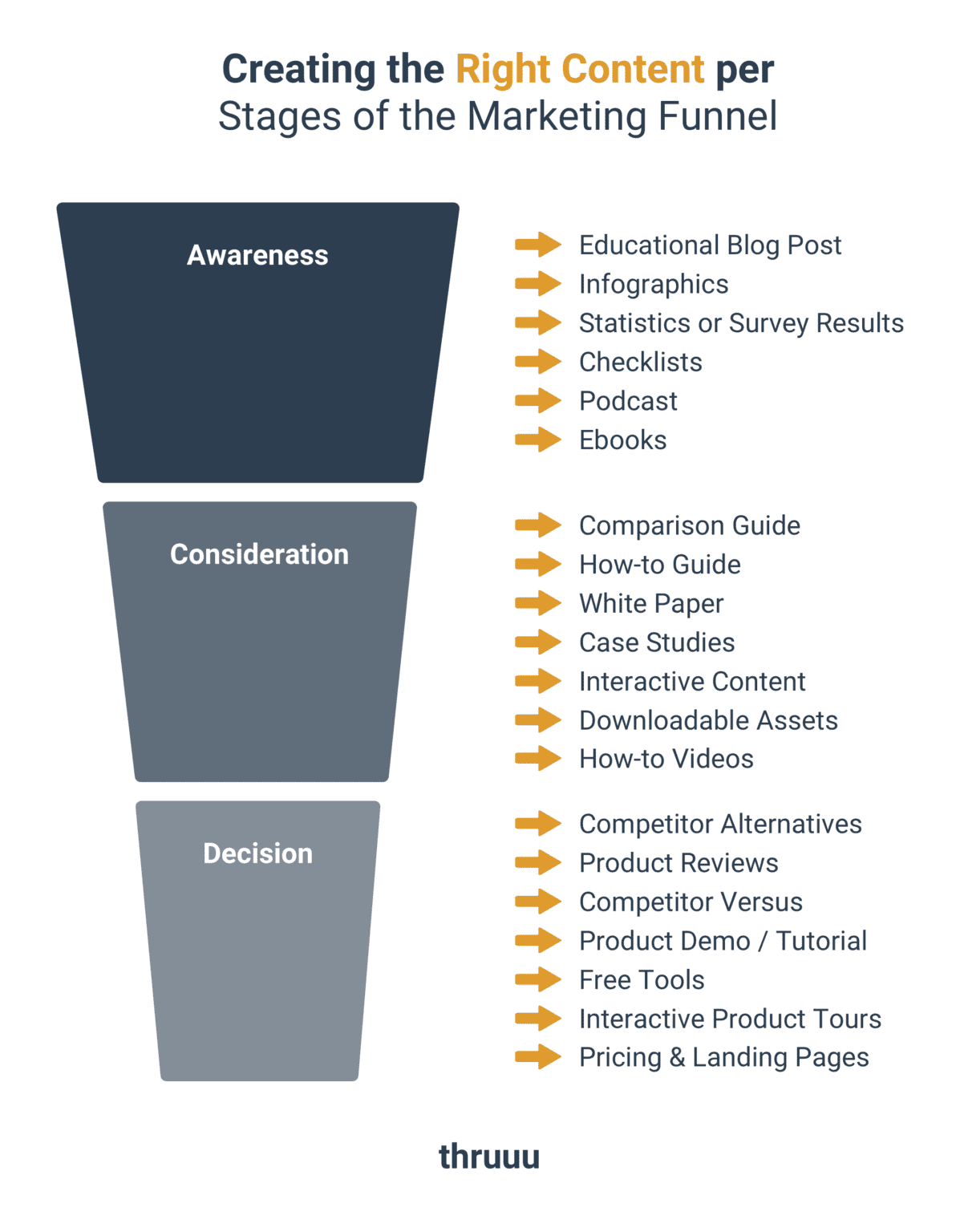
Pro tip: Use content repurposing strategies to use a single piece across different stages of the funnel. For example, turn a top-funnel blog into a product-focused video or testimonial to drive conversions.
To attract potential customers, upper funnel strategies focus on content and paid media that drive brand awareness and spark interest across platforms early in the customer journey. These efforts fill the funnel with qualified leads for later stages.
Paid media is hands-down the best strategy for creating awareness and visibility. Through ads on Google, YouTube, Meta, TikTok, Amazon, and LinkedIn, you can introduce the brand (or its product or service) to a massive audience. Even at this broad stage, smart targeting can help avoid wasted spend. But the main goal remains the same: get seen and remembered.
After all, one in three social media users uses different platforms to discover brands and products. So, these digital platforms and even offline ones, such as TV ads or billboards, are the best for TOFU marketing.
For example, Asian Paints used video ads on YouTube to expose the brand to a broad audience and saw a 20% increase in brand awareness and a 22% lift in traffic, as the ad reached over 16 million people.
According to a survey, 64% of marketers say content marketing is most effective at the top of the funnel. At this stage, content is educational, informative, and built to spark interest. The goal of this content is to present the problem the lead might have, explain how they can solve it, and naturally introduce your brand or product as part of the solution.
Upper funnel content includes:
For example, our sister agency client Hurom uses educational blogs to drive organic brand awareness. Their blogs include healthy juicing recipes and guides for addressing various health issues that organically bring in audiences looking for solutions to their problem and showing them that juicing could be the answer.
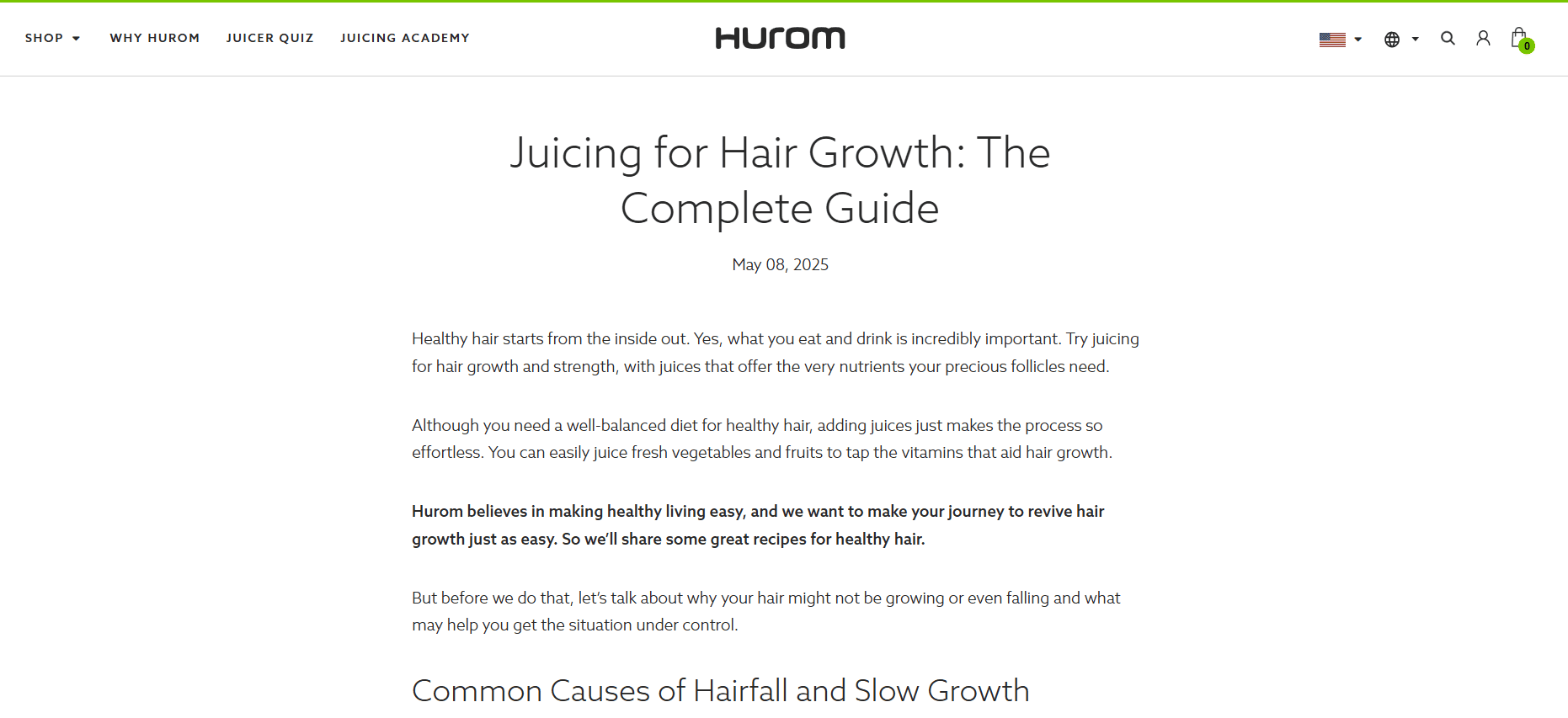
Although influencer marketing can be used at every stage of the funnel, it’s particularly impactful for creating awareness. Many influencers have niche audiences that are great for the upper funnel marketing.
For instance, 40% of Snapchat users report discovering brands through influencers. Such collaborations can provide instant exposure to the brand and may even lead to some conversions, reducing the timeline of the full funnel.
inBeat partnered with micro-influencers to create buzz around Native’s collection releases. These collaborations helped produce fast, relevant content that reached interested audiences who hadn’t yet interacted with the brand.

Live and virtual events can also be used at the upper funnel stage to drive awareness and interest in the brand. The event doesn’t even have to be yours. Simply sponsoring a relevant event can get the word out. These events can be festivals, seminars, conferences, webinars, and even podcast recordings.
Red Bull frequently uses this strategy for awareness by sponsoring extreme sports events worldwide. Some of these events aren’t even that big or mainstream, which shows that any event with decent attendance is good enough for upper funnel marketing.
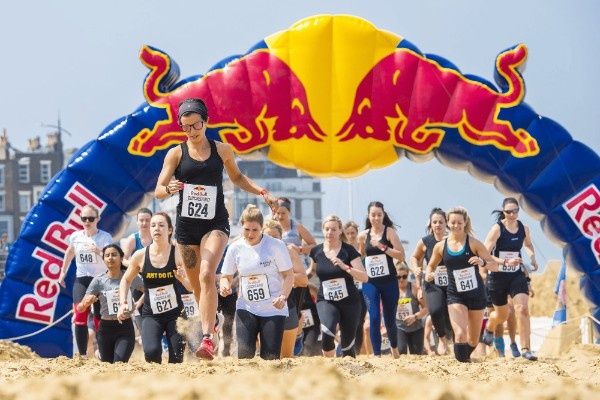
Upper funnel optimization matters because turning awareness into intent isn’t easy. You need a focused strategy that brings in quality leads and sets the foundation for downstream performance.
Here are some useful tips:
Pro Tip: Tag early-stage users based on TOFU actions like video views or resource downloads. Feed them into segmented nurture flows and behavior-based email drips to improve mid-funnel readiness and conversion rates later on.
At the bottom of the funnel, your tactics must focus on turning interested prospects into paying customers. This requires personalized content and clear, action-oriented messaging.
The following strategies can do wonders:
Content remains essential at this stage, but its role shifts. You create content that focuses more on the product or service and sells it to the lead. At this stage, the content is supposed to help the audience make a decision.
Here’s what that includes:
For example, Hurom used lower funnel content like countdown banners and time-sensitive offers during its Black Friday campaign by offering up to $200 off with a real-time timer. Paired with user-generated content showing real results, this strategy helped drive urgency and directly convert high-intent shoppers.

Data shows that retargeting campaigns can increase conversion rates by up to 150%, with retargeted users being around 70% more likely to convert than first-time visitors. It’s also about efficiency: retargeting often delivers 10× higher CTR compared to standard display ads and lowers CPA significantly.
This means when you invest in retargeting ads, you’re not just recovering lost traffic, but you’re also converting warm leads at a much lower cost. Therefore, retargeting is a must for your lower funnel marketing.
There are multiple ways to retarget, including paid ads, social media ads, and emails (more on that next).
Casper, a mattress brand, ran retargeting campaigns on Facebook that showed customer testimonials to recent site visitors. Such a campaign can lock in the potential customer who has already moved down the funnel and is warm enough to click that ‘Shop Now’ button.
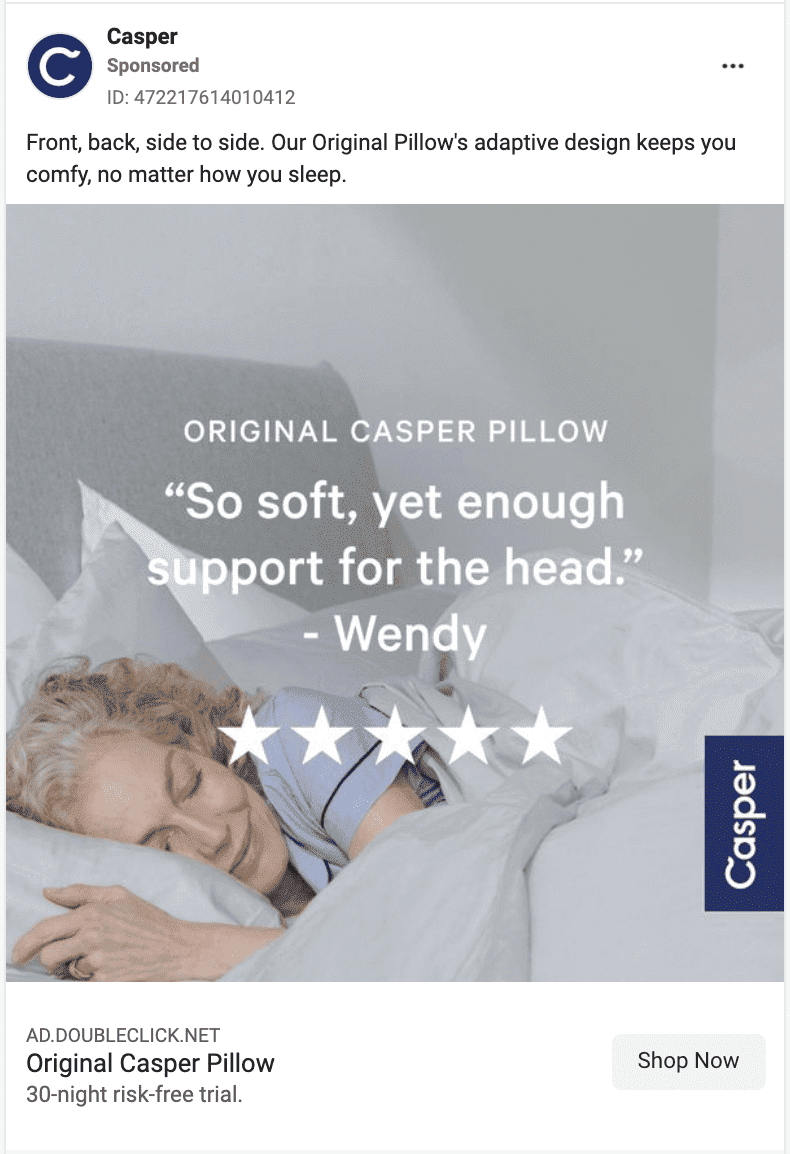
Email marketing is another powerful tool for lower funnel marketing. It’s best for retargeting or walking a warm lead to conversion (for example, in B2B lead nurturing).
Remarketing emails typically achieve open rates around 60% and click-through rates near 15%, outperforming standard email campaigns by wide margins.
Even simple cart‑abandonment email reminders can lift conversion rates by 10.7%, recovering lost sales and improving ROI.
Here’s an example of a remarketing email done right by Duolingo:
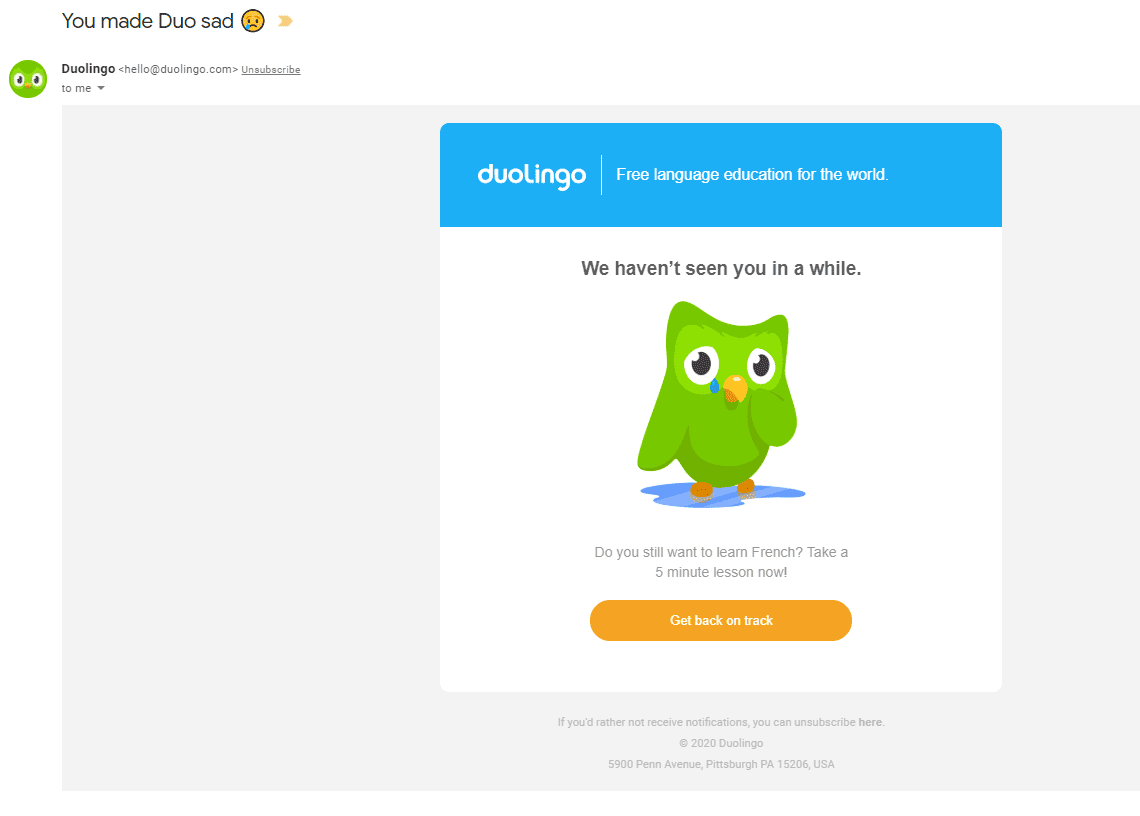
While often seen as retention tactics, loyalty and referral programs are powerful tools at the bottom of the funnel. Existing customers are already aware of your brand, so they’re ready to be converted once again.
When you reward repeat purchases and encourage brand advocacy, you move customers from a state of post-purchase satisfaction to becoming active brand evangelists.
Loyalty programs, such as points systems, credits, or tiered memberships, incentivize continued engagement and increase customer lifetime value, while referral programs leverage social proof by offering rewards to both the existing customer and the new lead they bring in.
See how PayPal used a referral award to acquire more users:

The lower funnel can be quite challenging, as it’s not as simple as exposing the audience to your brand. Your job now is to convert them into paying customers. And with competition high on nearly all platforms, you need to constantly optimize the conversion funnel.
This is how it can be done:
While both upper and lower funnel efforts are critical, the real advantage lies in integrating them through a cohesive full-funnel strategy. Smart marketers know that guiding users from first touch to final conversion and beyond delivers stronger results across the board.
This is especially true for B2B brands, where sales cycles are long and lead nurturing takes time. As Tequia Burt, Editor-in-Chief at LinkedIn, puts it:
“Employing a full-funnel strategy bridges gaps between marketing stages, nurtures customer relationships, and guides users through a journey that aligns with their needs.”
It’s important to strike the correct balance and pivot marketing efforts for each stage of the funnel. Most in-house marketing teams may struggle to accomplish this without the help of experts. That’s where a full-service marketing agency like inBeat can make a difference.
From brand awareness to conversion and retention, inBeat builds tailored full-funnel strategies. The experts at inBeat map campaigns to every stage of the journey to ensure your message reaches the right audience at the right time, with the impact that drives growth.
A real-world example of top-of-funnel marketing is a B2B tech brand publishing educational articles, hosting podcasts, and running social media ads targeting broad audiences. These marketing efforts will provide helpful information and introduce the brand without being pushy about buying.
BOFU tactics include case studies, demo videos, and cart abandonment remarketing. For instance, an e‑commerce company may use automated abandoned cart emails to target lost potential customers who almost made it to the lower funnel. Such tactics can boost conversion rate.
MOFU, or the middle of the funnel, occurs when prospects are past awareness and actively considering solutions. It’s where lead nurturing through webinars, whitepapers, email sequences, or product guides plays a central role. Prospects here expect detailed insights about features, benefits, and comparisons before moving to purchase.
Yes, SEO is often considered a top-funnel strategy. Optimizing for awareness-stage keywords, featured snippets, and educational blog content helps attract potential customers early in their journey, even if they’re not ready to buy yet. However, SEO also supports mid- and lower-funnel efforts through content tailored to higher-intent queries like comparisons, reviews, and product-specific searches.
Both upper and lower stages serve essential yet distinct roles. Upper funnel builds visibility and fills the pipeline, and lower funnel captures high-intent visitors and drives conversions. They're both vital in a full-funnel marketing strategy. Combining marketing efforts for both can help increase return on investment (ROI) and lower CPA over time.